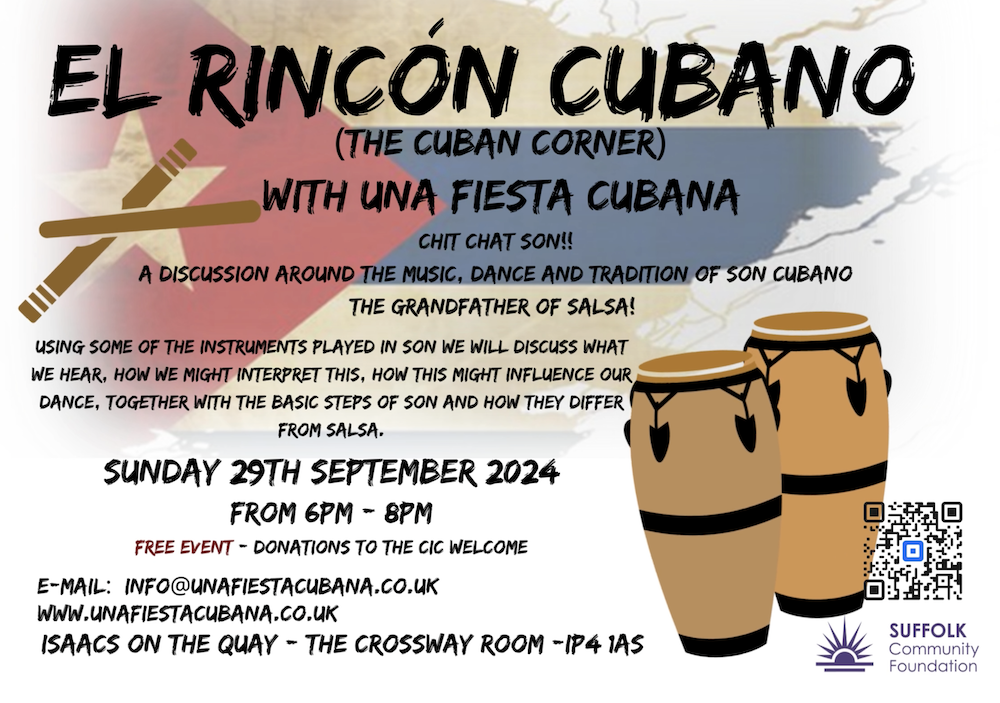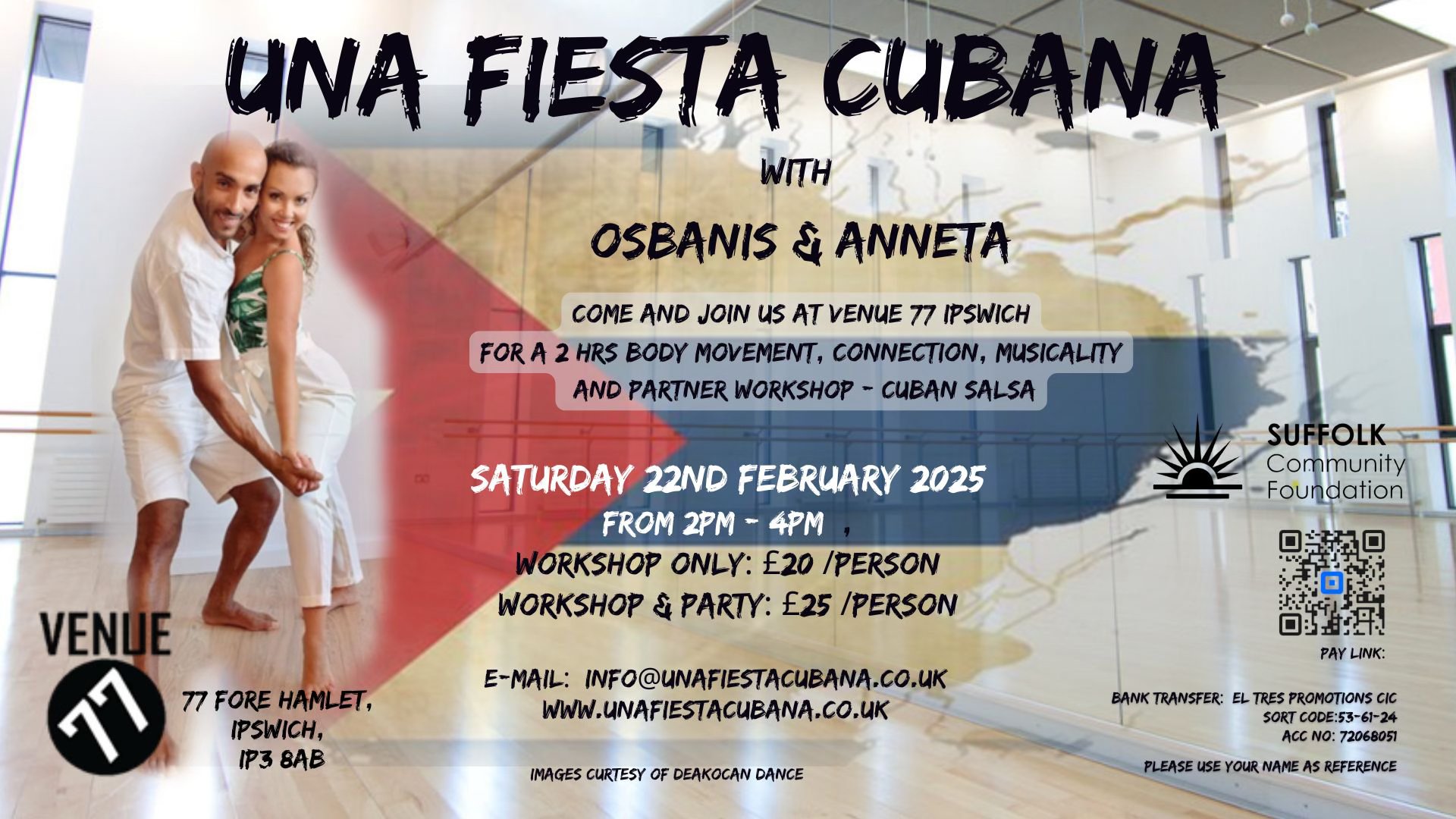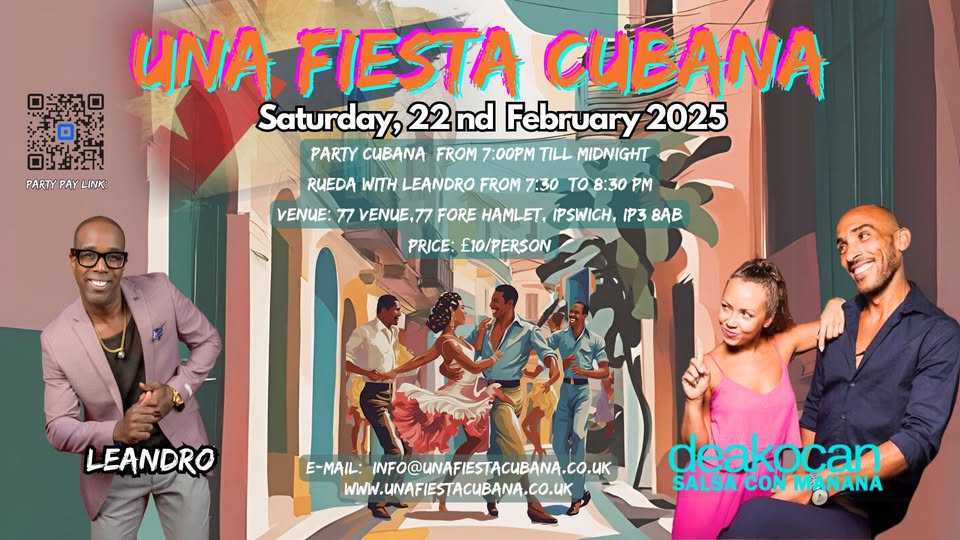
Son Cubano, sometimes called the “Father” or even the “Grandfather of Salsa,” is a lively music genre with roots in Cuba’s rich cultural blend of African and Spanish influences. This unique fusion is where the music we now know as salsa began, and it continues to inspire dancers and musicians around the world today. Recently, at our local salsa event, participants were taken on an interactive journey through the history, rhythm, and evolution of this captivating genre.
What is Son Cubano?
Son Cubano, meaning “Cuban sound,” is a vibrant music style that grew from the eastern highlands of Cuba. It combines Spanish guitar melodies with the rhythmic patterns of African percussion, resulting in a sound that’s both soulful and energetic. The genre is famous for its use of instruments like bongos, congas, claves, and timbales, which bring the African influence to the forefront, while the guitar, trumpet, and piano weave in the Spanish elements. This mix of cultures is what gives Son its unique groove, setting it apart from other styles of Latin music.
A journey through Son Cubano’s history
At the event, attendees were given a fun and interactive history lesson on Son Cubano, exploring how the genre emerged from traditional Cuban folk music. It started in the Oriente region of Cuba, where African and Spanish musical traditions began to merge. When musicians from eastern Cuba moved to Havana, Son Cubano took off, evolving into a more polished sound. Influential musicians like Arsenio Rodriguez and Beny Moré helped bring it to the world stage, where it later inspired the creation of other Latin music styles like mambo, cha-cha-cha, and eventually, salsa.
The rhythm and dance of Son Cubano
The heart of Son Cubano lies in its rhythm. The event featured live demonstrations with traditional instruments, showing how each piece fits together to create the rich, layered sound of Son. Claves set the foundation with a simple but essential rhythm, while congas and timbales added depth and complexity. The music’s rhythm directly impacts the dance, and participants were shown how the fluid, grounded movements of Son dancing differ from the faster, more flashy salsa style. Son’s dance style, with its slower pace and intricate footwork, requires dancers to really feel the music and connect with their partner.
Son’s influence on modern salsa
The event also explored how Son Cubano has influenced modern-day salsa music and dance. As Son traveled from Cuba to New York and beyond, it picked up influences from jazz, pop, and other Latin genres, eventually evolving into what we now call salsa. The group at the event demonstrated how the rhythms of Son are still very much alive in today’s salsa music, and attendees got to experience firsthand how the two styles connect. By the end of the session, participants left with a deeper appreciation for the rich musical heritage behind salsa and how Son Cubano continues to inspire and shape it.
Interested to know more? Lots more information is available here on Wikipedia or here on World Music Central
There is also the Festival of Son in London on the 8th -12th May 2025 – visit this site for more info!
Watch and listen
To fully appreciate the sound and spirit of Son Cubano, check out the music and videos below, that we shared at the event, where you can experience this fascinating genre and experience its rhythms for yourself.



